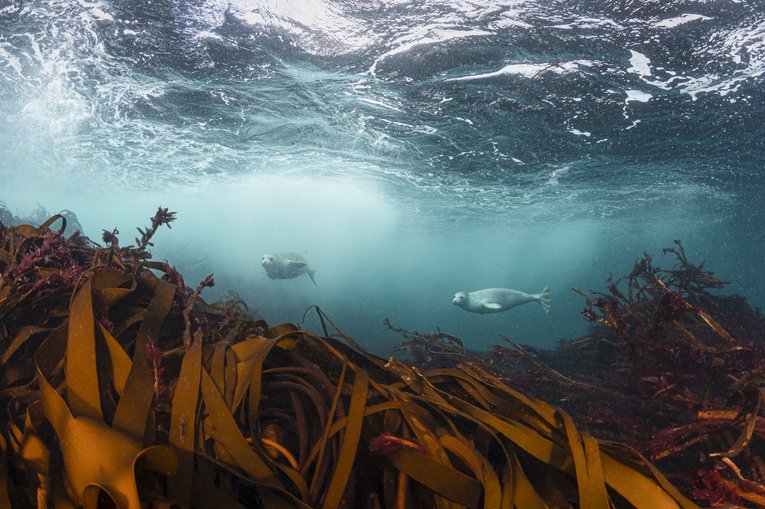
Amazing Ocean
With these resources your students will explore incredible underwater landscapes and the many creatures that live above and below the water's surface
Getting started
Be sure to read our getting started guide first. The guide tells you how our lessons have been designed to be used, and gives you a breakdown of the features included in each one.
1. Introducing the ocean
Our corner of the ocean, the North East Atlantic, is home to incredibly diverse habitats and species. Discover the wonders of our ocean and why a healthy ocean is important not just to marine life, but all life on Earth.
Explore how your school is connected to the ocean, and describe the five parts of the ocean.
Students will also learn why the ocean is salty and what causes the tides.

Credit: Damsea via Shutterstock
2. Create a food web
In this session students will learn to identify marine animals and build a food web.
They'll be able to define the terms predators, prey, producers, consumer, herbivore, carnivore, omnivore, habitat and diversity.
Students will also look at how external factors and threats affect a food web.

Credit: Kirsty Andrews
3. How do creatures adapt?
Through studying UK marine habitats, students will learn to identify a variety of creatures, as well as how and why they have adapted to their environments.
Working in small groups on a play about life in a habitat will help cement learning and allow creativity to develop.

Credit: Luis Miguel Estevez via Shutterstock
4. Life in the deep
In this activity-led session students will discover how animals in the deep have adapted to the harsh conditions.
Activities include paired work, class scientific observation, group measuring exercises and analysing images.
At the end of the lesson, students can design their own deep sea creature to include the adaptation features covered.

Credit: Superjoseph via Shutterstock
5. Rockpool explorer (outside)
Rockpools are fascinating environments to explore; this lesson involves taking your class on a trip to local rockpools. Students will focus on habitat conditions, adaptations and grouping animals.
This lesson provides pre- and post-activities to increase learning opportunities.
7. Grouping animals
Working in small groups, students will sort animals by their features and characteristics.
By the end of the activity, students will be able to define invertebrates and vertebrates, and name and describe characteristics of marine mammals, reptiles, birds and fish.

Credit: Georgie Bull
8. Sharks aren't scary
Sharks are fascinating creatures and we are lucky to have 21 resident species in UK seas.
This lesson explores the biology of sharks, including studying their anatomy, life cycle, and feeding adaptations. The lesson also touches on why these incredible creatures are threatened.

Credit: Kirsty Andrews



